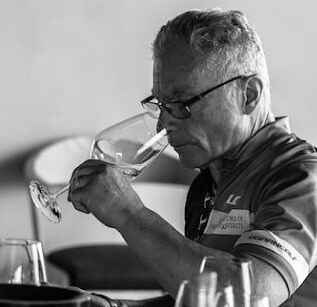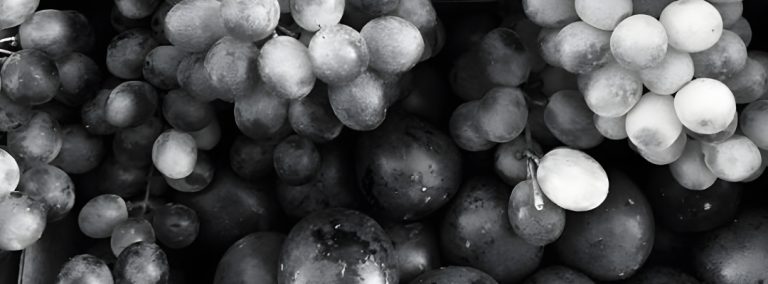Muscadet is a crisp, dry, light to medium bodied white wine from France that you may have heard of if you’re a fan of oysters. It comes from the westernmost wine growing region of the Loire River Valley, near the French city of Nantes, and is made from a grape called Melon de Bourgogne. Don’t confuse Muscadet with sweet wines labeled Muscat – it’s no relation!
The wine itself has notes of apple, lime, and lemon, and is a pale yellow in color, with green highlights. Some Muscadet can have a hint of saltiness to it, which is why it’s so good for pairing with seafood, especially raw shellfish.
The Muscadet AOC includes Muscadet Sèvre et Maine, Côteaux de la Loire, and Côtes de Grand Lieu, though 75% of all wines come from Sèvre et Maine which has several sub regions, each with its own distinct terroir and designation. The most famous of these are Gorges, Clisson and Le Pallet. If you see a wine that just says AOC, it could come from anywhere in the region.
Muscadet is an often overlooked or even unknown wine in the United States. This may be because it’s relatively inexpensive, at $15-20 a bottle, its name reminds people of sweet wines, or because it can come in a tall, German-style wine bottle. Nevertheless, Muscadet presents one of the single best values when it comes to dry French whites and is the perfect accompaniment to certain types of food, including steamed mussels and white fish, like sole, halibut, and cod.
You can find Muscadet in most fine wine shops and on French bistro wine lists – they may even have it by the glass. Note, because this wine is high in acid, bottles can typically be aged for 7-10 years.
Wine Tip: The term AOC stands for Appellation d’Origine Contrôlée and means a wine meets the regulations set out by the wine and grape growing authority for a particular growing area in France.
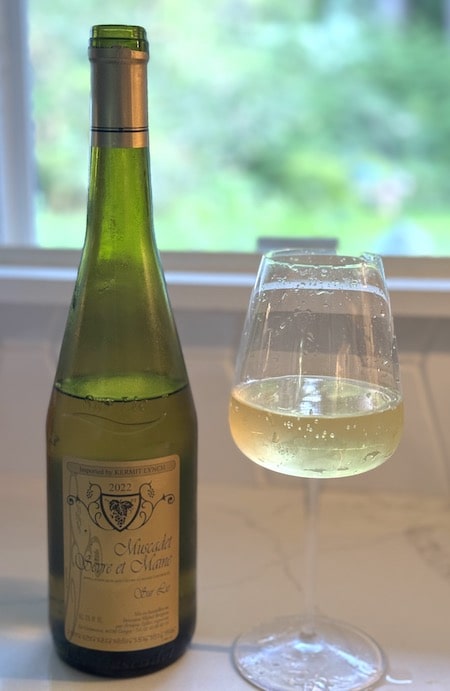
The Melon de Bourgogne grape
Melon de Bourgogne (which was recently renamed Melon B.) was brought to the Loire Valley in the 1700s by monks from Burgundy, France who were interested in finding a replacement for a previous varietal that had been wiped out by a killer frost. It’s a cross between Pinot Blanc and Gouias Blanc and is known to be more frost resistant. Interestingly, Melon de Bourgogne has since disappeared from Burgundy – in fact it was banned in the 1800s in favor of Chardonnay. The grapes are green in color and high in acidity. They do well in granite and schist soils, which are the main soils of the region.
Muscadet – what’s in a name?
Most wines in France take their name from the town or region they come from, think Sancerre, or Champagne. But not Muscadet! It’s not named after Nantes, nor is it named after its grape. So where does the name come from? The origins are somewhat of a mystery. Some believe they stem back to a slightly musky odor that was thought to be a characteristic of the grapes (wine experts strongly disagree on this). It’s also rumored to be related to the word for nutmeg, Noix de Muscade, which was once added to the wine by Dutch traders operating in France in the 1600s.
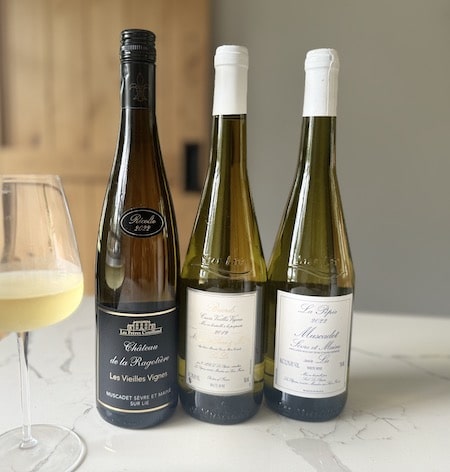
How Muscadet is made
Muscadet wines are generally fermented and aged in stainless steel to preserve their bright fruit and fresh acidity. They’re also commonly aged on their lees. Lees are the spent yeast cells that fall to the bottom of the tank after the sugars in grapes are converted to alcohol. You’ll often see “Sur Lie” written on Muscadet bottle labels (lie is the French word for lees) which indicates the wine underwent this process. The exception is if a wine comes from one of the sub regions of Sèvre et Maine where by law it’s forbidden to put “Sur Lie” on the label (even though the wines are sur lie). Aging a wine on its lees gives it slightly more body, texture, richness and a hint of creaminess.
Is Muscadet sweet?
Muscadet is not a sweet wine. In fact, it’s bone dry. Some people see the name and confuse it with Muscat which is a different varietal entirely (well, several varietals). Muscat grapes are grown in France and in many other countries around the world for their fruity aromatics. They can be dry but more often than not they’re used to make sweet, dessert wines.
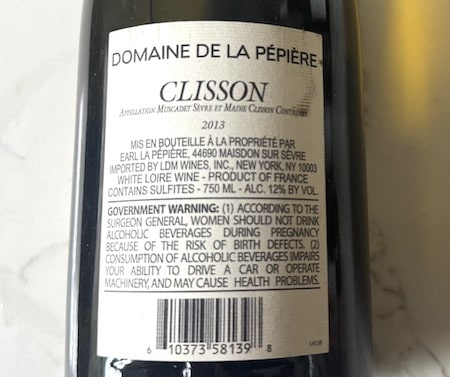
More on the Crus
Muscadet Sèvre et Maine has seven Crus which also have the title DGC or Dénomination Géographique Complémentaire. This title recognizes specific areas within an AOC that have particular soil types and terroir and produce unique wines.
- Gorges
- Clisson
- Le Pallet
- Château-Thébaud
- Goulaine
- Monnières-Saint-Fiacre
- Mouzillon-Tillières
Three additional areas in the Nantes region are set to be recognized as Crus in the next few years including La Haye-Fouassière, Champtoceaux, and Vallet.
For each area, there are certain rules that must be met, including a set alcohol percentage for the wine and lower yields per acre in vineyards. Wines from the sub regions are typically sur lie and aged for longer on their spent yeast compared to general AOC wines.
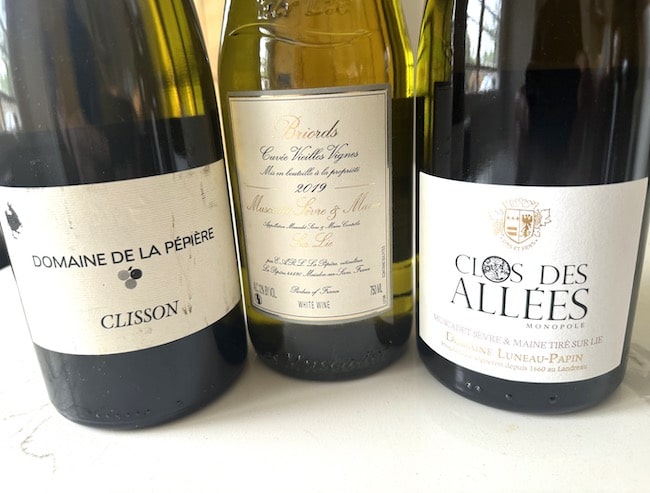
Some of the best producers
If you’re looking for a reputable Muscadet producer, try Domaine de la Pépière, Domaine Luneau-Papin, Domaine de l’Écu, Château du Cléray, André-Michel Brégeon, Eric Chevalier or Château de la Ragotière.
Wine Tip: Domaine and château are terms commonly used to refer to wine producers in France. A given domaine may make several wines from different sub regions in an area.
Aging Muscadet
The acidity in Muscadet is what helps it remain fresh and bright even after several years. A basic AOC can go into your wine cellar for 3-5 years, whereas single vineyard and Crus / DGC wines can be aged for 10+ years. Aging Muscadet gives the wine more texture and body.
Wine Tip: Be aware that aging whites for more extensive periods can add secondary flavors, including a distinct nuttiness which isn’t for everyone.

5 Food pairing ideas for Muscadet
- Moules-frites. Moules-frites is a traditional French dish where steamed mussels are cooked in shallots, butter, white wine and herbs and paired with french fries which you then dip into the sauce. Muscadet is probably the best wine to have with mussels and it goes without saying you can easily get through a pot of broth with a baguette and a bottle of Muscadet on a Sunday afternoon.
- Creamy seafood pasta. Because of its citrus based flavors and acidity, this wine goes wonderfully with cream based pasta dishes that have mussels, clams, scallops and other seafood in them.
- Oysters on the half-shell. If you’re ordering a half dozen oysters, go with a glass of Muscadet. Oysters can have subtle but distinct flavors depending on where they’re from and you want a wine that won’t overpower them. Because Muscadet is light and lean, it’s ideal in this respect. It also has a hint of saltiness that complements their briny tones. Interestingly, the region where Muscadet comes from is a major source of oysters in France.
- Paella. Paella is a Spanish rice dish that’s cooked with saffron, peppers and seafood, like clams, mussels and shrimp. There are also regional variations and some Paellas will have pork, chicken and chorizo too. You want a wine that can complement the spices in the food, and Muscadet is a great pairing choice!
- Filet of Sole. If you’re having white fish and looking for a bottle of wine to go with dinner, try Muscadet. It has a nice balance of texture and body that will make an ideal pairing.
The Loire River Valley
The Loire River Valley is a famous wine producing region in France that extends from the vineyards of Muscadet near the Atlantic Coast, inwards toward the Sancerre-Pouilly-Fumé area, not too far from Chablis. While the river itself is 600 miles long, they only make wine on about half of its length. Central Loire Valley is where some of the best red wines come from, think Chinon and Bourgueil. The main white wine grapes grown here are Sauvignon Blanc, Chenin Blanc and Melon de Bourgogne / B. Note, the Loire Valley is also a major tourist attraction for France where you can not only visit vineyards, but also châteaux and castles which were built on the river’s banks.

